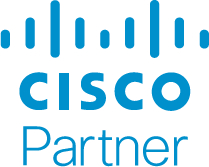June 26, 2024
Modernize Higher Ed Network Infrastructure With a Next Gen Network Assessment
Learn how to improve your network infrastructure to enable modern learning environments and effectively prepare for future upgrades and investments.
Many long-established colleges and universities have older structures that can’t easily be updated with modern cables and Wi-Fi. While trying to preserve these historic buildings and the importance they hold for their local communities, IT administrators must also meet the requirements of students who need to learn in-person and online.
As modern learning technology evolves, so too should the network. Discover how a next generation network assessment can identify improvements and help you stay ahead of network changes and demands to deliver reliable and secure connectivity anywhere, anytime across campus.
What Is a Next Generation Network Assessment?
A CDW Next Generation Network Assessment (NGNA) evaluates your current network infrastructure to identify areas for improvement. Differing from a generic network assessment, an NGNA includes over 140 robust checks based on best practices from leading manufacturers, covering architecture, configuration and more. Some NGNA’s can be customized for specific details based on an institution’s needs. For example, if IT admins want the assessment to have an SD-WAN focus, the engineers know what resources to include before the assessment.
NGNAs optimize your network for efficiency, network availability, performance, scalability and security, supporting next-generation applications. They are especially beneficial for institutions with old buildings and outdated cabling, providing actionable recommendations to modernize networks while preserving historic integrity.
Why Invest in an NGNA?
Higher education IT leaders are motivated to invest in next-generation network assessments to enhance network security, optimize operational efficiency and keep up with changes in the learning environment.
Evolving learning environments, hybrid learning models and online classes demand robust network connectivity. A network assessment ensures that your infrastructure can support these modern methods. Measuring your network availability allows you to have resilient systems, which is key to building a smart, secure and connected campus.
A next generation network assessment can also enhance network security. It identifies vulnerabilities and provides recommendations to protect data and maintain compliance. An NGNA can help IT leaders gain full visibility into the network and employ controls for maximum protection.
The presence of outdated networks is another driving factor to invest in an NGNA. Outdated networks lead to inefficiencies, increased costs and disruption in teaching and learning. A network assessment can identify optimization opportunities, helping institutions run more efficiently and cost-effectively.
Benefits of a Next Generation Network Assessment
By addressing network bottlenecks, an NGNA can significantly improve performance, ensuring faster data transmission and reduced latency. Additionally, an NGNA uncovers inefficiencies and provides cost-saving opportunities by optimizing resources and recommending necessary upgrades.
This proactive approach extends the life of current hardware and reduces the need for replacements. This ensures that investments are made wisely, reducing unexpected expenses. With detailed insights into the network, universities can ensure they make informed decisions to plan for future upgrades and investments.
Another benefit is that an NGNA can use tools and automation processes to make an intricate process of running assessments more manageable. New tools can help aggregate large amounts of data to report on everything that’s really happening with an institution’s network infrastructure.
The automation and tooling deliver performance data, identify bottlenecks and find errors in the network. These tools and automation capabilities streamline the process, saving engineers hours of manual work.
What to Expect From a Next Generation Network Assessment?
IT admins can expect a thorough walk-through of an NGNA beginning with a kickoff meeting and deployment of necessary tools to scan the network and gather data on all connected devices. Through initial interviews, architects can better understand what the stakeholders need and what they want to achieve from the assessment.
Then, experienced architects analyze the collected data to identify gaps and identify recommendations for immediate remediation, reviewing your network's architecture and design in detail.
After evaluating the network environment, architects assess the network's maturity and create a roadmap outlining tactical and strategic initiatives to address identified gaps. The plan includes an overview that addresses benefits, risks and estimated cost and timing.
The final phase involves presenting findings and recommendations to technical leadership, including a detailed report and a five-year comprehensive roadmap with budget costs and timelines.
Leveraging the Report and Findings
Here are a few tips to help you make the most out of your report:
- Use the assessment's findings to address critical issues immediately, ensuring your network is secure and optimized.
- Incorporate recommendations into long-term strategic planning, aligning IT initiatives with educational goals.
- Regularly update your network based on the assessment's findings, ensuring continuous improvement and adaptation to changing technologies.
How CDW Can Help You Modernize Your IT Infrastructure
Investing in a CDW Next Generation Network Assessment is a strategic move for higher education institutions. This professional service for higher education provides detailed and actionable insights, cost-saving opportunities and a roadmap for future upgrades to ensure that your network is optimized for high availability, reliability, scalability and security. The NGNA can improve a university’s overall network health, capacity and performance.
If you’re ready to enhance your network performance and prepare for future growth, CDW can help. Our team of experts are ready to assist you every step of the way. With our industry-leading partnerships, we can help you unlock your IT capabilities, finding the right solution to meet your unique needs. With our lineup of unique capabilities including consulting, assessing, providing health checks and managed services, we can help you achieve your goals no matter where you are on your journey. Our consultative approach helps us make sense of what you want to accomplish so you can maximize your existing investments.



